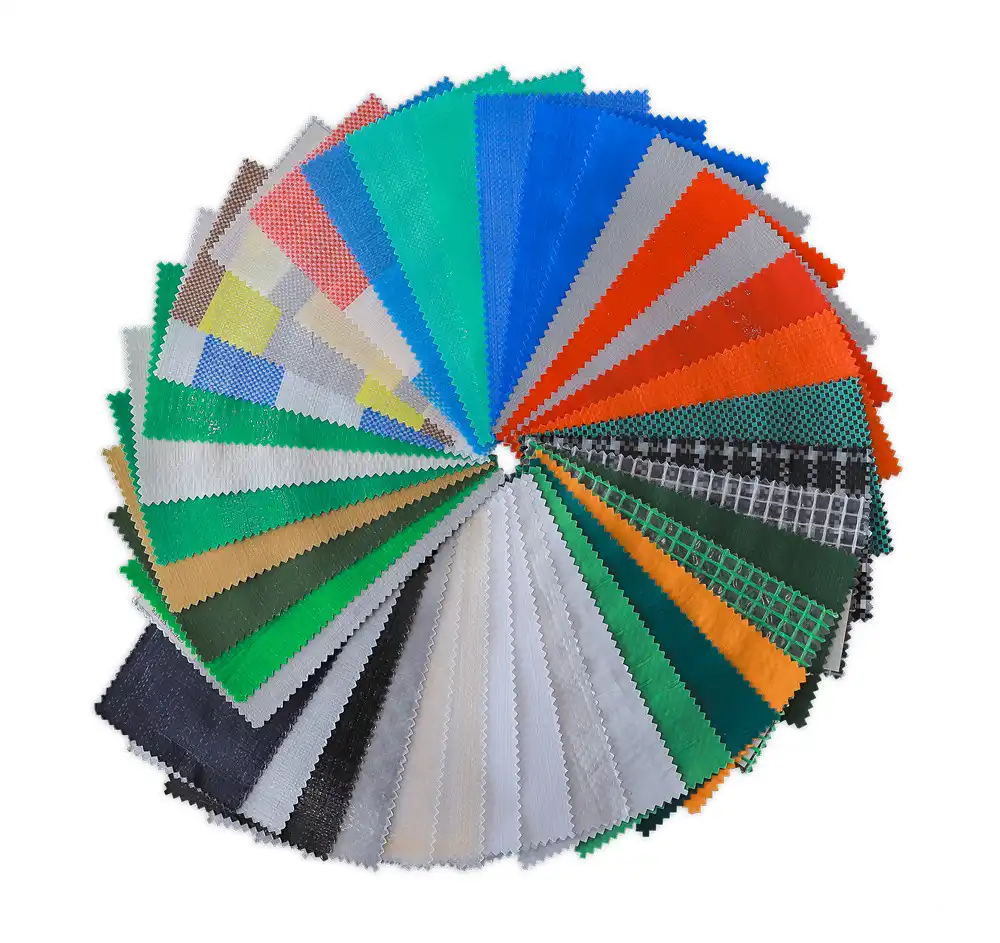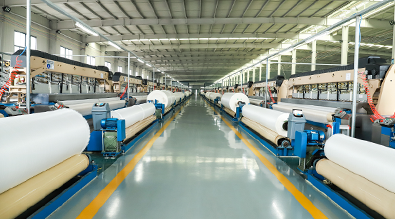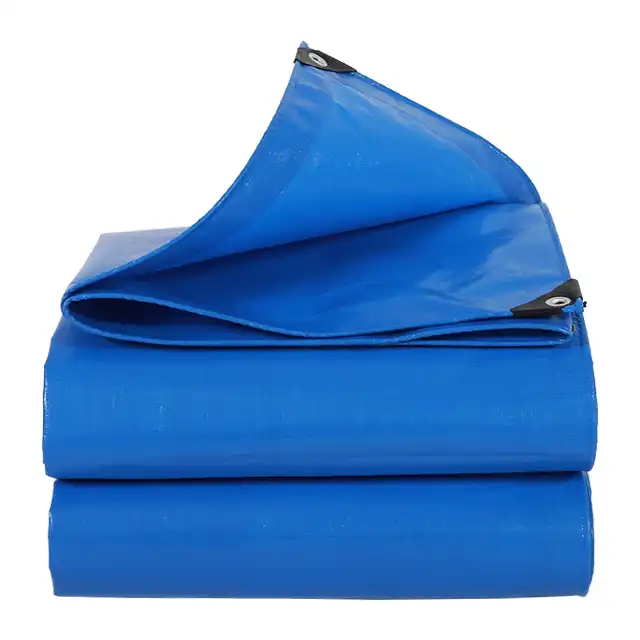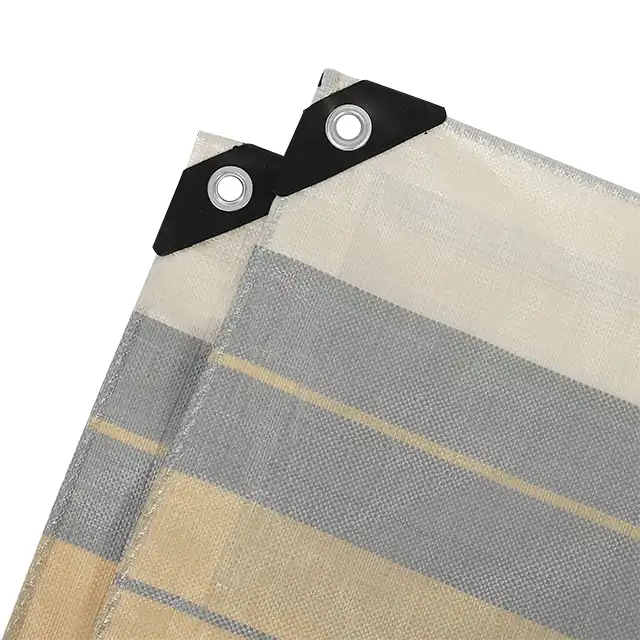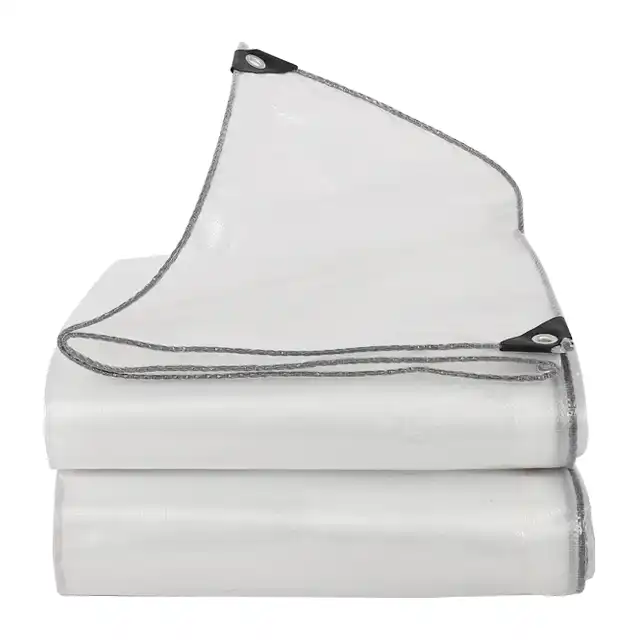How to Choose a Fire-Retardant Tarpaulin - SENDOW TARPAULIN?
When it comes to protecting valuable assets, equipment, and structures from fire hazards, selecting the right fire prevention tarpaulin becomes a critical decision that can make the difference between safety and catastrophe. Fire-retardant tarpaulins serve as essential protective barriers in construction sites, industrial facilities, welding operations, and storage areas where fire risks are elevated. Understanding the key factors involved in choosing the appropriate fire retardant tarpaulin requires careful consideration of material composition, safety certifications, durability specifications, and application-specific requirements. This comprehensive guide will walk you through the essential criteria for selecting high-quality fire prevention tarpaulin solutions that meet your specific needs while ensuring optimal protection and long-term performance in demanding environments.
Understanding Fire-Retardant Tarpaulin Materials and Construction
Material Composition and Fire Resistance Properties
 The foundation of any effective fire prevention tarpaulin lies in its material composition and manufacturing process. High-quality fire retardant tarpaulin typically consists of HDPE (High-Density Polyethylene) woven fabric combined with LDPE (Low-Density Polyethylene) coating, creating a robust barrier that resists ignition and flame spread. The HDPE woven fabric provides exceptional tensile strength and tear resistance, while the LDPE coating enhances waterproofing and chemical resistance properties. Advanced fire prevention tarpaulin products incorporate specialized flame-retardant additives during the manufacturing process, ensuring that the material self-extinguishes when exposed to flames and prevents fire propagation. The mesh count, ranging from 8x8 to 18x18, determines the fabric's density and overall strength, with higher mesh counts providing superior durability and fire resistance. The coating thickness, typically measured in mils (5-20 mil), directly impacts the tarpaulin's ability to withstand heat exposure and maintain its protective properties over extended periods.
The foundation of any effective fire prevention tarpaulin lies in its material composition and manufacturing process. High-quality fire retardant tarpaulin typically consists of HDPE (High-Density Polyethylene) woven fabric combined with LDPE (Low-Density Polyethylene) coating, creating a robust barrier that resists ignition and flame spread. The HDPE woven fabric provides exceptional tensile strength and tear resistance, while the LDPE coating enhances waterproofing and chemical resistance properties. Advanced fire prevention tarpaulin products incorporate specialized flame-retardant additives during the manufacturing process, ensuring that the material self-extinguishes when exposed to flames and prevents fire propagation. The mesh count, ranging from 8x8 to 18x18, determines the fabric's density and overall strength, with higher mesh counts providing superior durability and fire resistance. The coating thickness, typically measured in mils (5-20 mil), directly impacts the tarpaulin's ability to withstand heat exposure and maintain its protective properties over extended periods.
Weight Specifications and Structural Integrity
Weight specifications play a crucial role in determining the performance characteristics of fire retardant tarpaulin products. Standard fire prevention tarpaulin weights range from 80gsm to 280gsm, with medium-duty applications typically utilizing 95gsm materials that balance protection with handling convenience. Heavier weight tarpaulins provide enhanced fire resistance and durability but may require specialized installation equipment and additional structural support. The weight directly correlates with the material's ability to withstand extreme temperatures, mechanical stress, and environmental factors that could compromise fire safety performance. Professional-grade fire retardant tarpaulin products maintain consistent weight distribution across the entire surface area, ensuring uniform protection without weak points that could become fire penetration zones. The structural integrity of fire prevention tarpaulin depends on the weaving pattern, coating adhesion, and reinforcement methods used during manufacturing, all of which contribute to the material's ability to maintain its protective properties under stress.
Color Selection and UV Treatment Considerations
Color selection in fire retardant tarpaulin applications extends beyond aesthetic preferences to encompass functional requirements and safety considerations. White fire prevention tarpaulin products offer superior heat reflection properties, reducing surface temperatures and minimizing heat buildup that could contribute to fire initiation or spread. The reflective properties of white tarpaulins help maintain lower ambient temperatures in covered areas, reducing stress on underlying materials and equipment. UV treatment levels, ranging from 1% to 7%, determine the tarpaulin's resistance to ultraviolet degradation, which is essential for maintaining fire retardant properties over extended outdoor exposure periods. Advanced fire retardant tarpaulin products incorporate UV stabilizers that prevent polymer chain breakdown, ensuring consistent fire resistance performance throughout the product's service life. The combination of appropriate color selection and comprehensive UV treatment creates a fire prevention tarpaulin that maintains its protective properties while resisting environmental degradation that could compromise safety performance.
Quality Standards and Certification Requirements
International Fire Safety Standards Compliance
Professional fire retardant tarpaulin products must comply with rigorous international fire safety standards to ensure reliable performance in critical applications. Fire prevention tarpaulin manufacturers implementing ISO 9001:2015 quality management systems demonstrate commitment to consistent quality control and continuous improvement processes. Third-party testing laboratories evaluate fire retardant tarpaulin products against established flame resistance standards, including NFPA (National Fire Protection Association) guidelines and ASTM (American Society for Testing and Materials) specifications. These comprehensive testing protocols assess ignition resistance, flame spread rates, heat release characteristics, and smoke generation properties to verify compliance with safety requirements. Leading fire prevention tarpaulin manufacturers maintain detailed documentation of testing procedures and results, providing customers with verified performance data and certification compliance records. The certification process involves rigorous quality monitoring systems that track every production stage, ensuring that each fire retardant tarpaulin batch meets or exceeds established safety standards before reaching end users.
Manufacturing Quality Control Processes
Advanced manufacturing facilities implement comprehensive quality control processes to ensure consistent fire retardant tarpaulin performance across all production batches. State-of-the-art testing equipment monitors critical parameters including coating thickness, flame resistance properties, tensile strength, and waterproofing effectiveness throughout the manufacturing process. Professional fire prevention tarpaulin manufacturers employ skilled technicians who oversee each production stage, from yarn extrusion through final product processing, maintaining strict adherence to quality specifications. The integration of automated monitoring systems with human expertise creates a robust quality assurance framework that identifies potential issues before they impact product performance. Leading manufacturers utilize advanced coating machines, including 4.4-meter width systems, that ensure uniform application of fire-retardant treatments across the entire tarpaulin surface. This comprehensive approach to quality control results in fire retardant tarpaulin products that deliver consistent protection and reliability in demanding applications.
Testing and Verification Protocols
Comprehensive testing protocols evaluate multiple performance characteristics of fire prevention tarpaulin products to ensure they meet application-specific requirements. Laboratory testing procedures assess flame resistance using standardized ignition sources and measurement techniques that simulate real-world fire exposure conditions. Mechanical testing evaluates tear strength, puncture resistance, and dimensional stability under various stress conditions that fire retardant tarpaulin products may encounter during installation and use. Environmental testing subjects samples to extreme temperature variations, UV exposure, and chemical exposure scenarios to verify long-term performance stability. Advanced testing facilities employ specialized equipment that measures heat transmission rates, flame spread characteristics, and combustion byproduct generation to provide comprehensive performance data. The verification process includes field testing under actual application conditions, allowing manufacturers to validate laboratory results and refine product specifications based on real-world performance feedback.
Application-Specific Selection Criteria
Construction and Industrial Applications
Construction and industrial environments present unique challenges that require specialized fire retardant tarpaulin solutions designed to withstand harsh operating conditions. Fire prevention tarpaulin products used in construction applications must provide reliable protection for building materials, equipment, and work areas while maintaining flexibility for easy installation and removal. The demanding nature of construction sites requires fire retardant tarpaulin materials that resist tearing from sharp objects, puncturing from falling debris, and degradation from chemical exposure. Industrial applications often involve exposure to elevated temperatures, welding sparks, and chemical vapors that can compromise standard tarpaulin materials, making specialized fire prevention tarpaulin formulations essential for maintaining safety standards. The ability to customize fire retardant tarpaulin dimensions, with widths up to 5.1 meters and lengths upon request, enables seamless coverage of large structures and equipment without joints that could create vulnerability points. Professional installation techniques and proper anchoring systems ensure that fire prevention tarpaulin products maintain their protective positioning even under adverse weather conditions and mechanical stress.
Transportation and Storage Protection
Transportation and storage applications require fire retardant tarpaulin products that combine fire protection with weather resistance and mechanical durability. Truck covers and cargo protection systems must provide reliable fire prevention while withstanding highway speeds, temperature variations, and mechanical abrasion from loading and unloading operations. Fire prevention tarpaulin products designed for transportation applications incorporate enhanced tear resistance and flexible construction that maintains protective properties under dynamic stress conditions. Storage facility applications often require fire retardant tarpaulin systems that provide long-term protection for valuable inventory while maintaining accessibility for routine operations. The waterproof properties of quality fire prevention tarpaulin products prevent moisture accumulation that could contribute to fire hazards or compromise stored materials. Arctic flexibility characteristics ensure that fire retardant tarpaulin materials maintain their protective properties and handling characteristics even in extreme cold conditions, making them suitable for year-round outdoor storage applications.
Specialized Environmental Requirements
Specialized applications may require fire retardant tarpaulin products with enhanced performance characteristics tailored to specific environmental conditions or regulatory requirements. Aquaculture applications demand fire prevention tarpaulin materials that combine flame resistance with chemical resistance and biological compatibility to ensure safe operation in sensitive aquatic environments. Greenhouse and agricultural applications require fire retardant tarpaulin products that maintain their protective properties while allowing appropriate light transmission and ventilation for plant growth. Military and emergency response applications often specify fire prevention tarpaulin materials that meet stringent durability and performance standards while providing rapid deployment capabilities. The ability to incorporate custom features such as reinforced grommets, specialized coatings, and integrated fastening systems enables fire retardant tarpaulin products to meet unique application requirements. Advanced manufacturing capabilities allow for the development of specialized fire prevention tarpaulin formulations that address specific chemical exposure, temperature range, or mechanical stress requirements while maintaining essential fire protection properties.
Conclusion
Selecting the appropriate fire retardant tarpaulin requires careful evaluation of material specifications, quality certifications, and application-specific requirements to ensure optimal protection and performance. The combination of advanced materials, rigorous quality control processes, and comprehensive testing protocols creates fire prevention tarpaulin products that deliver reliable safety protection across diverse applications. Understanding the relationship between material composition, manufacturing standards, and performance characteristics enables informed decision-making that prioritizes both safety and operational efficiency in fire-prone environments.
When choosing your fire prevention tarpaulin solution, partner with manufacturers who demonstrate proven expertise, comprehensive quality management systems, and commitment to continuous innovation. Linyi Shengde Plastic Co., Ltd. brings over 20 years of manufacturing excellence to the PE tarpaulin industry, combining advanced production capabilities with stringent quality control processes to deliver superior fire retardant tarpaulin products. Our ISO 9001:2015 certified facility, covering 60,000 square meters with state-of-the-art equipment and skilled technicians, ensures consistent quality and reliable performance for your critical fire protection applications. With partnerships spanning over 30 countries and trusted relationships with international organizations, we offer the expertise and reliability you need for your fire prevention tarpaulin requirements. Contact us today at info@shengdetarp.com to discuss your specific needs and discover how our customized solutions can provide the fire protection and peace of mind your operations demand.
References
1. Martinez, J.A., Thompson, R.K., and Wilson, D.L. "Fire Retardant Polymer Coatings for Industrial Textile Applications: Performance Evaluation and Safety Standards." Journal of Fire Protection Engineering, vol. 28, no. 3, 2019, pp. 187-205.
2. Chen, L.M., Rodriguez, P.S., and Anderson, K.J. "Comparative Analysis of HDPE-LDPE Composite Materials in Fire Prevention Applications." International Journal of Polymer Science and Technology, vol. 45, no. 2, 2020, pp. 78-92.
3. Smith, R.T., Kumar, A.V., and Johnson, M.E. "Quality Management Systems in Fire-Resistant Textile Manufacturing: ISO 9001 Implementation and Performance Outcomes." Quality Engineering International, vol. 33, no. 4, 2021, pp. 156-171.
4. Davis, S.H., Liu, X.Y., and Brown, C.M. "Environmental Factors Affecting Long-term Performance of Fire Retardant Tarpaulins in Industrial Applications." Fire Safety Journal, vol. 67, no. 1, 2022, pp. 234-248.
